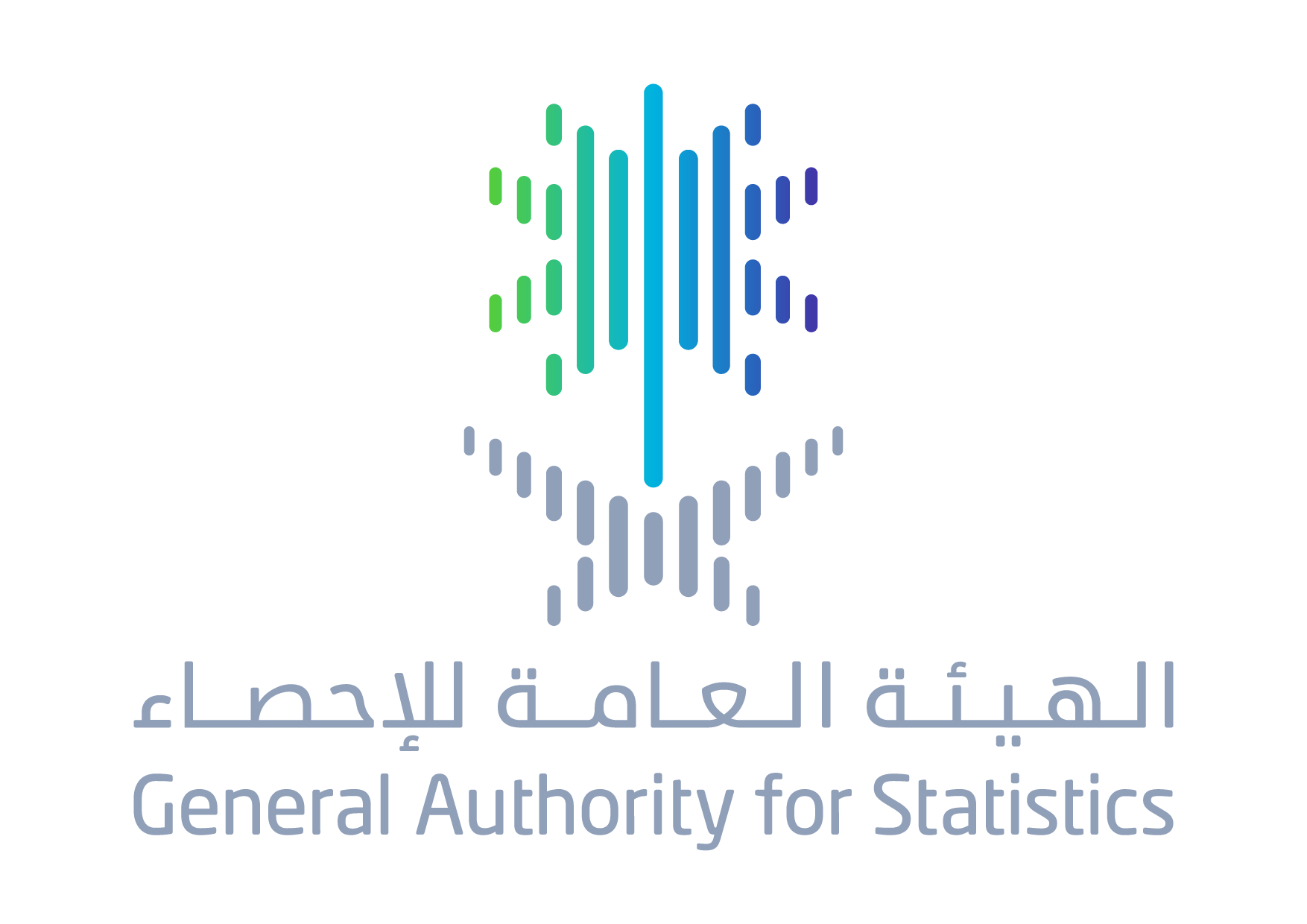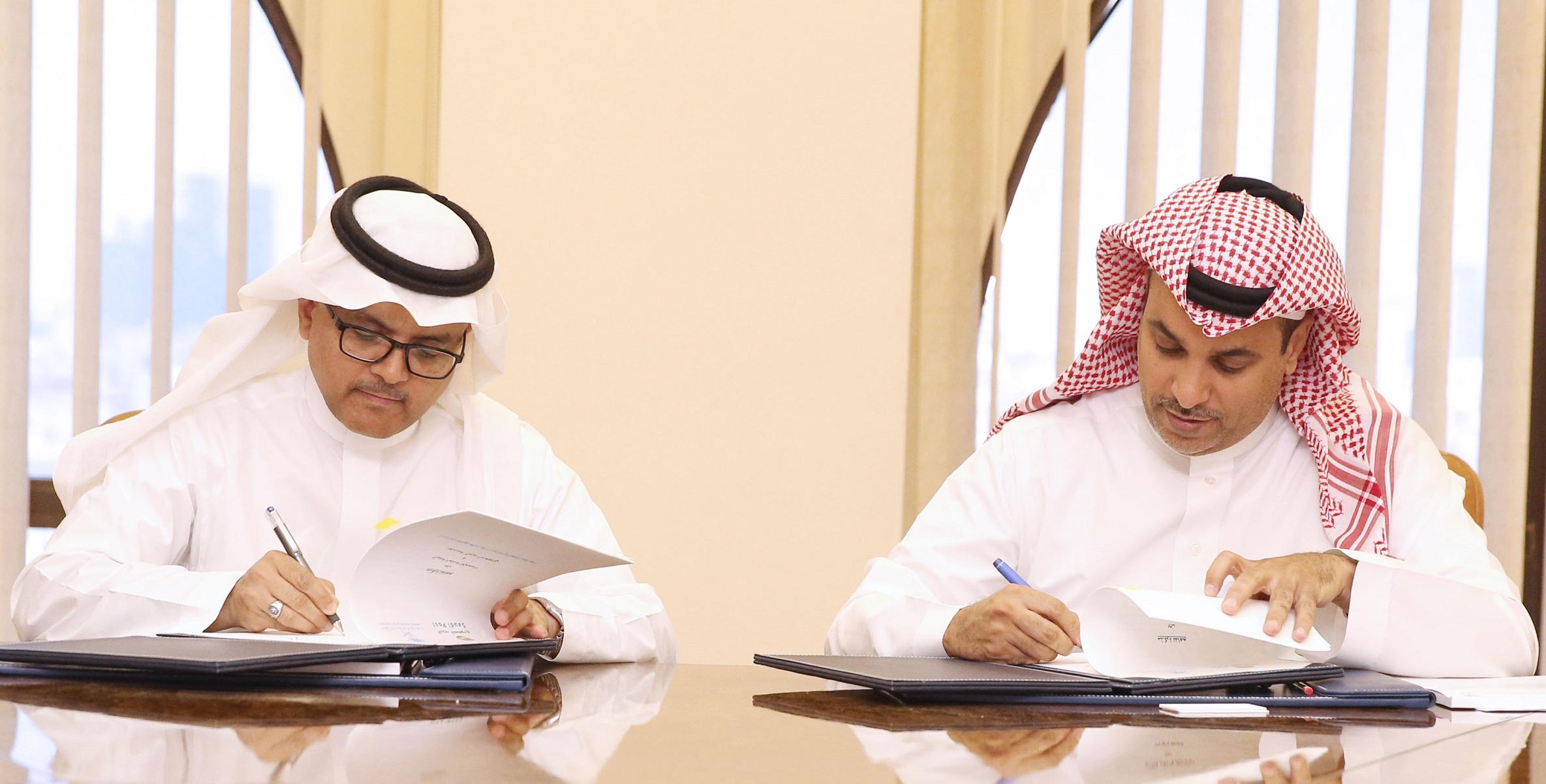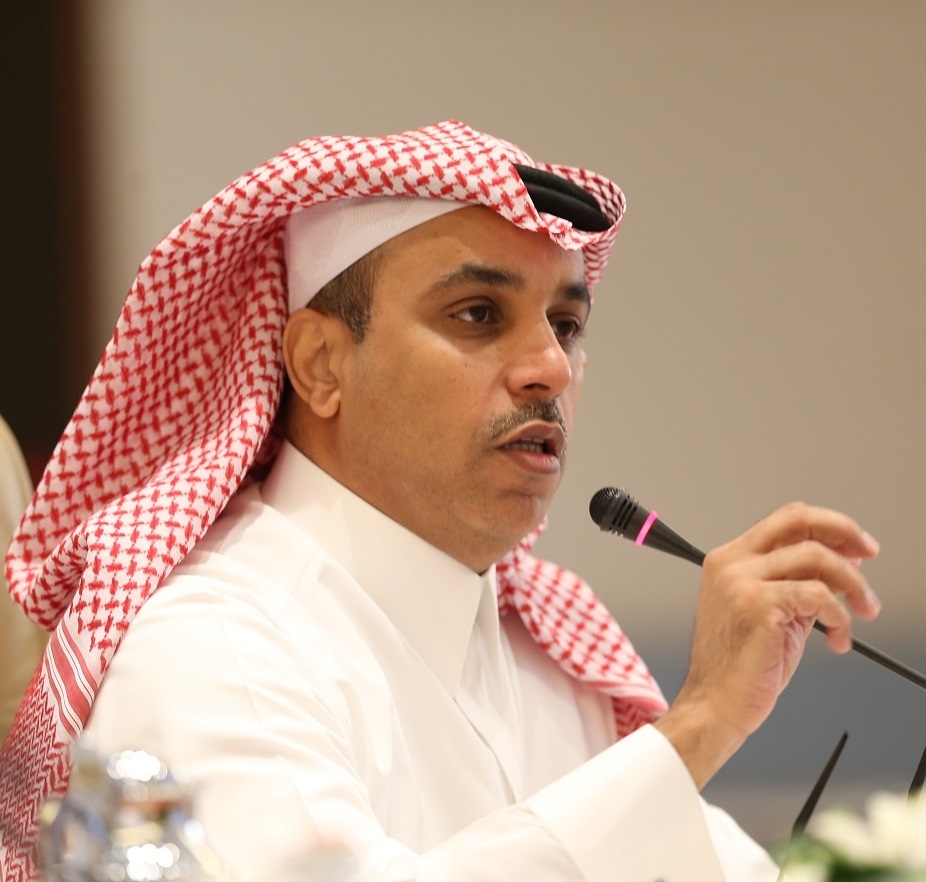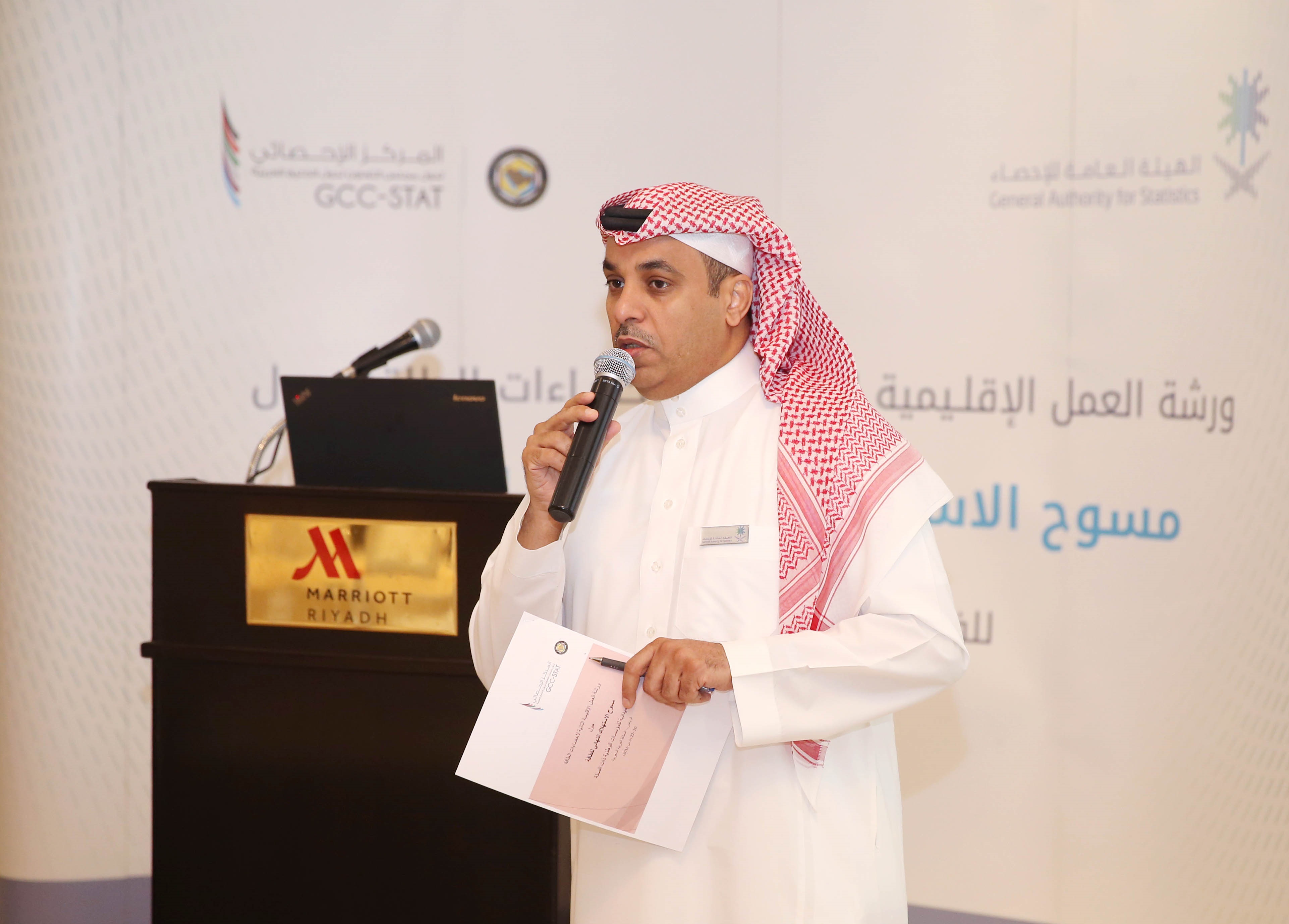
" الإحصاء “: استقرار مؤشر الرقم القياسي لتكلفة المعيشة لشهر سبتمبر الماضي
(6) sections decreased, and (4) rose.
"GaStat" : Cost of Living Index remains stable in September 2016
On Monday, the 23th of Muharram 1438 H/ 24th of October 2016 AD, the General Authority for Statistics (GaStat) issued the monthly indicator of Saudi cost of living index for the month of September. It is now published on its website www.stats.gov.sa .The indicator didn't record any relative change compared to the previous month.The monthly report indicates that the Saudi cost of living index indicator recorded (137.9) in September 2016 without any relative change compared to August 2016. It recorded an increase above (133.9) from September 2015, recording a rise of 3.0% on an annual basis.The report attributed the monthly increase to the rises of four of the main sections that constitute this indicator; clothes and shoes section with (0,7%), food and beverages with (0.3%), telecommunication section with an increase of (0.2%) , and finally, furniture ,appliances, and maintenance with an increases of (0.1%).On the other hand, six sections have decreased; commodities and services with a decrease of (1.0%), restaurants and hotels with a decrease of (0,7%), literacy and recreation with (0.4%), transportation with a decrease of (0,2%), housing, water, electricity, gas, and other types of fuels with a decrease of (0.2%), finally, health section with (0.1%).However, the sections of tobacco and education did not change and remained stable.The cost of living index indicator issued monthly by GaStat aims at providing data about the prices of commodities and services that are in the consumer basket. It also aims at providing data about the cost of living indices within a time series. (The consumer basket) refers to the actual group of commodities and services that are recorded during the household expenditure and income survey. The relative distribution of the commodities and services consumption inside the consumer basket is extracted to make it the base stone in the process of indices calculation. The cost of living indices are used to measure any change in the prices of commodities and services that are purchased by consumer. Moreover, it is used as an accurate indicator that measures the economic inflation and recession. It is also used in statistical and economic analyses that are associated with prices movement and anticipations in different times. Data are collected by conducting interviews. The sources addresses are clarified to the interviewers to facilitate their task. The sources distribution in one city must cover all available commodities and services with all levels.

" العنوان الوطني " يربط البيانات بالموقع لرفع جودتها ويؤسس مرجع مكاني موحد للإحصاءات
GaStat and Saudi Post Institutions Sign a Memorandum
" National Address" Links Data with the Website to Raise Its Quality, and Establishes a Statistics Unified Spatial Reference
GaStat starts using the national address map, which is verified by Saudi post institution, to be the base of the statistical data collection operations. It also links the data of national address in the statistical field operations. On Sunday, 22 of Muharram 1438 H, GaStat and Saudi post institution signed a memorandum to enhance the collaboration between the two entities and activate the use of national address as a geographical base of data and statistics in Saudi Arabia, so that it can be used in the 2020 population and housing census.
Dr. Fahad bin Sulaiman Al-Tukhaifi, president of the General Authority for Statistics, said that the collaboration with Saudi post institution is all about producing and using the geospatial data and link them with the statistical data through surveys and administrative records conducted periodically and regularly by GaStat. The main objective is achieving integration between them to provide high quality statistical products that collaborate in supporting policy and decision makers. He added, unifying the efforts between the authority and the institution in the fields of geographical and spatial data collaborates in unifying the data sources by an updated, certified, and unified Saudi map. In its coming field works either for households or establishments, GaStat will provide statistical data and links them with the national address geographically, so that they can collaborate in providing high quality data in all fields. Dr. fahad clarified that this cooperation includes publishing the statistical data in a way of geographical distributions by using the national address map, and setting unified technical principals between the two entities when dealing with data and raising the statistical awareness.
On the other hand, Dr. Osamah bin Mohammed bin Saleh Altaf, Saudi post institution acting president, indicated that the Saudi post is working on the collaboration with GaStat within the Saudi post institution strategy which shows the Saudi post capabilities in the field of geospatial information and national address for all entities, in addition to providing the statistical data and link them geographically with the unified national address.
Dr. Altaf asserted that this agreement is one of the important agreements that the Saudi post made. It is considered a crucial addition in the field of accurate national statistics publishing through the national address digital maps which use the most recent international techniques.
He added, the Saudi post wants to exchange its experience and provide its services after building a national organization of the standard addresses of every Saudi location and building by using the most recent techniques, geographical information systems, and addresses standards and principals. He stressed on the importance of using the national addresses as they are considered a base infrastructure that all government electronic services and commerce rely on, so that citizens and foreigners all over Saudi Arabia get benefited from its programs.

الهيئة العامة للإحصاء تبدأ العمل بالهيكلة الجديدة
New (Statistical, Creative, and Awareness) Departments to Cope with the Requirements of the New Saudi Vision and National Transformation
GaStat Starts Working with the New Structure
The General Authority for Statistics starts working with the new organizational structure. A general administration for natural resources and knowledge statistics has been created. It works beside the general administration of economic statistics, the general administration of social statistics, field statistics departments, methodologies departments, creativity departments, and awareness departments.
GaStat president, Dr. Fahad bin Sulaiman Al-Tukhaifi said that working with this new organizational structure is a response to the 2030 Saudi vision and 2020 national transformation program. The next phase needs integrated efforts from the statistical sector, so the sector must work in a distinct way as it is the only official sector that is responsible for the production of data, information, and statistics, which reflect the developments in Saudi Arabia.
Dr. Fahad clarified that the new structure, which has been authorized since the first day of this Muhharam, is a way that guarantees achieving the authority's strategic goals that are represented in enhancing the efficiency and quality of statistical services and products. Moreover, it makes these services more comprehensive and beneficial. It also helps to raise the satisfaction level of all clients and beneficiaries, gives the authority a positive reputation in the society, promotes the statistical sector level, and builds a strong authority.
Al-Tukhaifi added that this new structure is based on the statistical development' national strategy aspects, covering five aspects that guarantee the efficiency of the statistical sector in Saudi Arabia. The first aspect is using the statistical data and information, which aims at improving the use of statistical data and information in Saudi Arabia. This would fulfill all the users' needs by providing easy and on time statistical data and information. There is also the aspect of statistical data and information production, which aims at enhancing the field operations such as censuses, surveys, and researches. Furthermore, it enhances using the most recent standards and classifications in collecting, analyzing, and publishing data. The third aspect is the recent technologies. It aims at using the most recent technologies in all the phases of the statistical and administrative work. It provides a high quality IT infrastructure. The fourth aspect is the communication and awareness, which aims at enhancing the statistical knowledge in society through education and awareness. It introduces those who work in the statistical sector with the concept of communication. The fifth aspect is about governance. Through this aspect, the authority is trying to set the principals that govern the statistical sector. This enhance the idea of "results based management" . It continuously develops the human resources and tries to recruit people with high capabilities.
As for the main components of the authority new structure, Dr.Fahad stated that the organizational structure has been made by a teamwork from the authority and some experts outside the authority. This structure was made to develop and improve the statistical work. It also positively collaborate in activating the strategic transformation through which the Saudi statistical work is going. It enhances the role of the entity that supervises and organizes the statistical work by transforming it into an independent authority that has a featured personality and administrative and financial independence. The teamwork worked on determining the tasks, duties, and regulations according to certified instructions that guarantee founding an effective and comprehensive statistical organization. This new organization focused more on the clients and raising the products quality, considering them the main dimensions of work. The new statistical organization has been built in a way that prevent duality in work and responsibilities. It also intends to make the organizational structure compatible with the authority’s strategy by collecting the harmonized activities in one sectors and administrative units to implement unified tasks. In this structure, Many administrations and departments have been founded to achieve the strategic goals.
Regarding the main components of the new organizational structure, the authority president revealed that the statistical and administrative work has been distributed among three main sectors headed by the vice presidents. These sectors include the statistical works sector, which contains general administrations of economic statistics, social statistics, and natural resources and knowledge statistics (new one). In addition to the independency of the statistical field works with a general administration of operations. There is also an administration specialized in methodologies.
As for the second sector, the statistical creativity and customer service sector, it is a totally new sector. However, the third sector represents IT and supporting services, as they are the main infrastructure of the authority’s statistical and administrative work. Moreover, the new structure includes a general administration of media and statistical awareness, which manages all the internal and external activities aiming at raising statistical awareness. It also includes a general administration of projects and strategic planning which implements and prepares the authority’s strategies and plans. Furthermore, there is a general administration of support and institutional excellence that manage, prepare, and update all the policies, operations, and procedures. The later also supervises the programs of total quality department and knowledge department.

د. التخيفي: نهدف إلى توحيد معايير منتجي البيانات لخدمة مواطني " الخليج "
GCC "Energy Statistics" in Riyadh
Dr. Altekhaifi: We aim to unify Data producers' Standards to Serve "GCC" Citizens
Media center- Riyadh
The Chairman of the GCC Statistical center, the Chairman of the General Authority for Statistics in the Kingdom of Saudi Arabia, Dr. Fahad Sulaiman Altekhaifi expressed his thanks and gratitude towards the leaders of the GCC countries for supporting all programs and activities of the "GCC Statistical centre", as a result of their role in supporting all decisions related to the development of GCC nations. Dr. Altekhaifi asserted that the results of the Energy Statistics' Second Regional workshop about the final consumption of energy surveys held in Riyadh city meet the needs of the national and regional policy makers of the energy sector. It will also support everything that would develop the energy sector in GCC countries. Dr. Altekhaifi also added that through this workshop, the GCC statistical centre seeks to strengthen the cooperation between energy statistics producers, and unify the efforts in the used technical standards. In addition, it seeks to implement International standards by all data producers in member countries.
Dr. Altekhaifi revealed that the most important role of data producers in this meeting is to reinforce the understanding of the international standards related to energy statistics in the statistics system. In addition, it aims to explain the links between energy data groups and discuss the user's needs by enhancing the data and its publishing. Moreover, it aims to unify the efforts to raise the awareness about the methodologies needed in preparing energy statistic in the region. Furthermore, it aims to deepen the participants' understanding of international standards that support energy statistics. Also it clarifies the importance of the final consumption surveys' system.
In this workshop the participants reviews the national experiences of the member countries and the importance of the energy final consumption surveys. In addition, the participants visits several energy sector related entities in the kingdom of Saudi Arabia. This workshop continues until 22 March, 2016.
It is worth mentioning that The GCC Statistical Centre was established in June 2011 to provide a common official pool of statistics and data for the member states of the GCC. It was also established to support the statistical work of national statistical centers and planning entities in GCC countries.. The Charter was officially endorsed in December 2012 by the GCC Supreme Council (comprised of heads of member states: United Arab Emirates, Kingdom of Bahrain, Kingdom of Saudi Arabia, Sultanate of Oman, State of Qatar and State of Kuwait).
